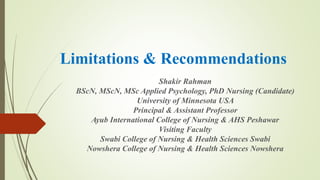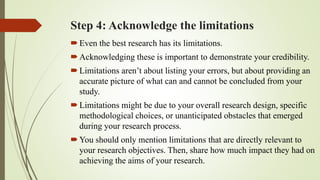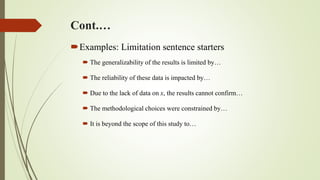The document outlines the structure and key components of the discussion section in research papers, emphasizing the importance of summarizing findings, interpreting results, discussing implications, acknowledging limitations, and providing recommendations. It also highlights common mistakes to avoid, such as introducing new results or making unsupported claims. The goal is to effectively communicate the significance of research findings in relation to existing literature and future studies.



















